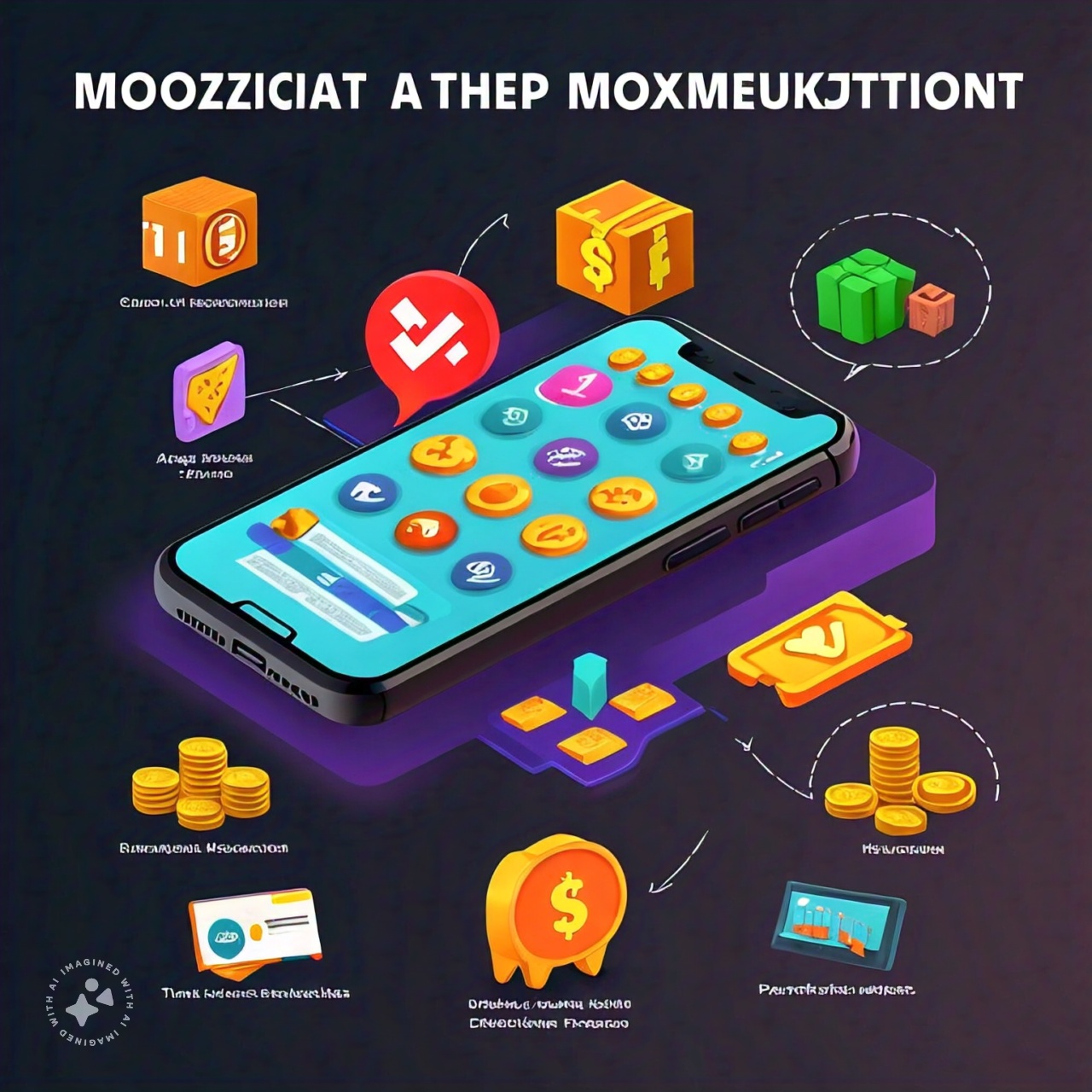
Monetizing an Android game is an essential step for developers aiming to turn their passion into profit. With the mobile gaming market expanding rapidly, understanding the different monetization strategies available can help you maximize your revenue potential. In this comprehensive guide, we’ll delve into various methods such as in-app purchases, ads, subscriptions, and more to ensure your game becomes a lucrative venture.
Why Monetization Matters in Android Game Development
Monetization is the process of converting your game’s user base into revenue. Even the most popular android game development company may struggle to generate income without effective monetization strategies. This aspect is crucial for sustaining your development efforts and funding future projects and updates.
The Economics of Free-to-Play Games
Free-to-play (F2P) games have taken the mobile gaming industry by storm. These games attract a wide audience because they don’t require an upfront payment, lowering the entry barrier. However, they rely heavily on in-game purchases and ads to generate revenue. Understanding this model is key to successful monetization.
Engaging Your Audience
Player engagement is the cornerstone of any monetization strategy. Engaged players are more likely to make in-app purchases, watch ads, and subscribe to premium services. To keep your audience engaged, focus on creating an immersive and enjoyable gaming experience. Regular updates, new content, and responsive customer support can significantly enhance engagement.
In-App Purchases (IAPs): The Cash Cow
In-app purchases are a primary revenue stream for many mobile games. They allow players to buy virtual goods or premium features, directly contributing to your income.
Types of In-App Purchases
Consumable Purchases
Consumable purchases are items that players buy, use, and then need to purchase again. Examples include extra lives, in-game currency, or special power-ups. These items provide a continuous revenue stream because they need to be replenished frequently.
Non-Consumable Purchases
Non-consumable purchases are one-time buys that remain permanently with the user. These include unlocking levels, removing ads, or buying character skins. They are great for giving players a premium experience and can be marketed as exclusive or special items.
Subscription Models
Subscription models provide recurring revenue by offering players regular content updates, exclusive features, or an ad-free experience. This model is increasingly popular as it ensures a steady income flow.
Best Practices for Implementing IAPs
Seamless Integration
The purchasing process should be smooth and not disrupt the gaming experience. A clunky or confusing IAP system can deter players from making purchases. Ensure that the integration is user-friendly and works flawlessly across all devices.
Value Proposition
Players should feel like they’re getting their money’s worth. Offering exclusive items, significant gameplay advantages, or time-saving options can make purchases more appealing. Clearly communicate the benefits of each purchase to the players.
Avoiding Pay-to-Win
It’s crucial to balance IAPs to avoid creating a pay-to-win scenario, where players who spend money gain unfair advantages over those who don’t. This can alienate your player base and harm the long-term success of your game. Ensure that your game remains enjoyable and fair for all players.
Advertising: Turning Impressions into Dollars
Ads are another major revenue source for mobile games. When implemented correctly, they can provide significant income without compromising the player experience.
Types of In-Game Ads
Banner Ads
Banner ads are small, rectangular ads that typically appear at the top or bottom of the screen. While they don’t offer high engagement, they are less intrusive and provide steady revenue.
Interstitial Ads
Interstitial ads are full-screen ads that appear at natural transition points within the game, like between levels. They have higher engagement rates but can be disruptive if overused. Timing and frequency are crucial to ensure they don’t negatively impact the user experience.
Rewarded Ads
Rewarded ads offer players in-game rewards for watching an ad. This type of ad is highly effective because it provides value to the player while generating revenue for the developer. Players might watch an ad to earn extra lives, in-game currency, or other bonuses.
Ad Placement Strategies
Non-Intrusive Placement
Strategic placement of ads is essential to maintain a good user experience. Place ads in areas where they won’t interrupt gameplay. For example, showing ads during loading screens or after completing a level can be effective.
Frequency and Timing
Balancing how often ads appear and when they are shown is crucial. Too many ads can frustrate players and drive them away, while too few might not maximize your revenue potential. Use analytics to find the optimal ad frequency that maximizes revenue without sacrificing player satisfaction.
Other Monetization Strategies
Beyond IAPs and ads, there are several other strategies you can use to monetize your game.
Subscription Models
Offering a subscription model can provide a steady stream of income. Subscribers might receive premium content, an ad-free experience, or early access to new features. This model ensures consistent revenue and can be particularly effective for games with regular updates and new content.
Sponsorship and Partnerships
Partnering with brands or other games can provide additional revenue streams. This might involve featuring branded content, cross-promotions, or exclusive in-game events sponsored by a company. These partnerships can be mutually beneficial, increasing exposure for both parties.
Selling Merchandise
If your game has a strong fanbase, selling merchandise like T-shirts, posters, or figurines can be a lucrative side business. Physical products allow fans to support the game while also promoting it to others. Set up an online store and integrate it with your game to make the process seamless.
Crowdfunding
Crowdfunding can be an effective way to raise funds for game development or specific projects within the game. Platforms like Kickstarter or Patreon allow fans to support the game in exchange for exclusive rewards or early access. This strategy provides funding and builds a dedicated community around your game.
Analytics: The Backbone of Successful Monetization
Analytics are crucial for understanding player behavior and optimizing monetization strategies.
Tracking User Behavior
Use analytics tools to track how players interact with your game. Metrics like session length, in-app purchase frequency, and ad engagement can provide valuable insights. Understanding where players spend their time and money helps refine your monetization strategies to maximize revenue.
A/B Testing
Experiment with different monetization methods and analyze the results. A/B testing can reveal what works best for your specific audience. For example, you might test different ad placements, IAP pricing, or reward structures to see what generates the most revenue without negatively impacting the user experience.
Retention and Churn Rates
Monitoring retention and churn rates can help you understand how well your game retains players over time. High churn rates might indicate issues with the game or monetization strategy that need addressing. Improving player retention through better engagement can lead to increased revenue.
Legal and Ethical Considerations
Monetizing a game comes with legal and ethical responsibilities. Ensuring transparency and protecting player data are paramount.
Transparency and Consent
Always be transparent about your monetization practices. Ensure players know what they’re paying for and that all transactions are consensual. Clear communication about the costs and benefits of in-app purchases or subscriptions builds trust with your players.
Protecting Player Data
With great power comes great responsibility. Ensure that all player data is secure and that your game complies with relevant data protection regulations, such as GDPR or COPPA. Implementing robust security measures and being transparent about data usage can prevent legal issues and build player trust.
Conclusion
Monetizing your Android game development agency involves a mix of strategies, from in-app purchases to ads and beyond. Understanding your audience and integrating these methods seamlessly can transform your game from a fun project into a profitable business. Remember, the goal is to enhance the player experience while generating revenue, striking a balance that keeps your players happy and your wallet full. By continuously refining your monetization tactics and keeping player engagement at the forefront, you can ensure your game’s long-term success and profitability.



